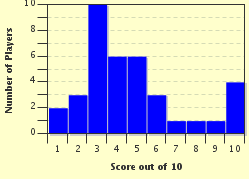Quiz Answer Key and Fun Facts
1. What small island off the coast of Dunedin has the same name as an island off the coast of North Island?
2. Which long New Zealand river originates in New Zealand's biggest inland body of water?
3. Which South Island lake is sometimes known as Mirror Lake by people that don't know its real name?
4. When Captain Cook first mapped New Zealand, which piece of land did he mistakenly map as an island?
5. Earthquakes are common in New Zealand as it sits on the edge of two tectonic plates. What is the name of the major fault line that runs most of the length of South Island?
6. What is the name given to the location of the Stirling Falls in Milford Sound?
7. What island in Otago Harbour is thought to be the plug of the Dunedin Volcano?
8. A small island in Foveaux Strait is named after which fish?
9. The location of Wellington Airport used to be underwater. What process made it dry land?
10. What is the name given to the hot wind that affects many parts of Canterbury?
Source: Author
youngmade
This quiz was reviewed by FunTrivia editor
spanishliz before going online.
Any errors found in FunTrivia content are routinely corrected through our feedback system.


